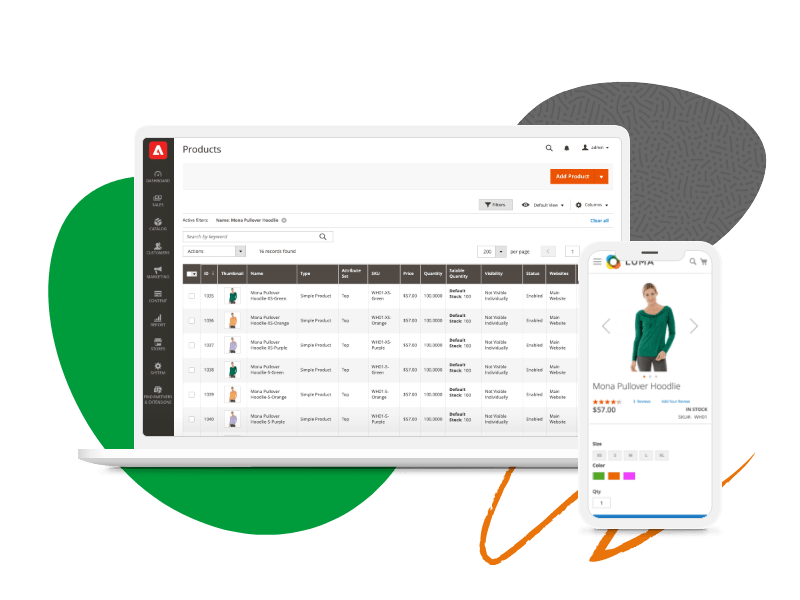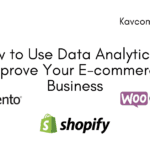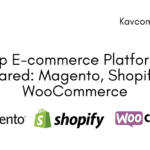Magento 2 eCommerce accounts for a growing portion of global commerce. Many businesses — both big and small — now rely on online sales for the majority of their daily transactions. Traditional brick-and-mortar often achieve sales through their website that match or exceed in-store purchases.
Magento 2 eCommerce is given many businesses’ dependence on web sales, eCommerce platforms are in high demand., Adobe Commerce (formerly Magento 2 eCommerce), is one of the most widely used eCommerce platforms. It offers hosting, cloud services, marketing tools, and much more. However, it can cost thousands of dollars per year. For smaller businesses, Magento Open Source may offer a good balance between pricing and features.,
What Is Adobe Commerce?
Adobe Commerce is a highly customizable eCommerce platform. It offers merchants complete control over the appearance, functionality, and content of their online stores.

Adobe Commerce provides a CMS and CRM suite, incorporating AI to serve as a merchandising, marketing, sales tracking, fulfillment, and shopping cart system. Adobe derives knowledge from analytics to constantly enhance the performance of your online store in real time.
Adobe Business has a full e-commerce solution, but it may be too expensive for small businesses. Luckily, you can use Magento for free, but you won’t receive the AI-driven marketing tools that Adobe provides.
Magento Open Source is a free product, but to make use of it in the creation of your site you might have to purchase extras.
Adobe Commerce is a helpful eCommerce platform. The price will depend on a company’s needs and annual revenue, however, Adobe quotes you at least $22,000 annually.
How to get better results with open source software Magento 2 eCommerce
Magento Open Source is completely free and open-source, so you can customize it however you feel necessary.
Magento Open Source has some limitations that must be compensated for by either purchasing third-party services or paying for the Enterprise version of Magento.
Magento Open Source Features
Magento Open Source offers the following core features:
- Integrated Checkout, Payment, and Shipping
- Mobile-Optimized Shopping
- Global Selling Capabilities
- Catalog Management Tools
- Extended Functionality via an App Marketplace
- Instant-Purchase Functionality
- Site Search Functionality
While Magento Open Source comes with these valuable features for free, it doesn’t include some essential services necessary for an online store. You’ll need to access those services from a third party.
Pricing for Services Not Included in Magento Open Source
Magento Open Source does not include hosting, securing your website, or domain registration. Domain registrations typically cost $10-20 per year, hosting is usually between $10-30 per month, and an SSL certificate costs nearly $300 a year.
For the best Magento website, it may cost $5,000 to $15,000 per year and at least an extra $5,000-$10,000 in the first year with a third party for development and theme.
The cost of a Magento website is influenced by the size and quality of the theme. However, due to the availability of many free or low-cost products, this may not be significant. The cost can range from $5,000-$20,000 with an additional $5,000-$10,000 in labor costs during the first year.
People may have to pay a third-party company, such as a developer and/or designer, to set up Magento.
Extensions and add-ons also can increase the cost. While you can find thousands available for free or under $30, some can cost up to $2,000. These items may represent one-time costs or they may be monthly or yearly subscriptions.
When considering the costs to third-party services, using the Magento Open Source platform typically costs around $5,000 – $15,000 per year with at least an additional $5,000 – $10,000 in the first year for a developer and theme.
| Typical Third-Party Expenses Associated With Using Magento Open Source | |
| Domain | $10-$20 per year |
| Web Hosting | $10-$30 per month |
| SSL Certificate | $200-$600 per year |
| Magento Developer | $65-$150 per hour |
| Magento Theme | $17-$25,000 ($5,000 average) |
| Extensions/Add-Ons | $0-$2,000 per item |
Adobe Commerce
The paid platform, Adobe Commerce, covers many of the costs above, including robust cloud-based hosting and security tools. Many of Adobe Commerce’s features are tailored toward much larger eCommerce operations.
Typical users of Adobe Commerce include businesses operating multiple websites or even running multiple companies and likely selling to and from various locations around the world. These businesses conduct millions or billions of dollars in yearly sales both to consumers (business-to-consumer or B2C) and to other businesses (business-to-business or B2B). The pricing for this platform reflects its value to these very large businesses.
Adobe Commerce Features
Adobe Commerce offers all of the features included with Magento Open Source plus many business-focused, built-in additions. Using machine learning and AI, Adobe Commerce constantly analyzes a store’s performance, letting business owners know what works and what doesn’t. It presents this information in easy-to-understand reports that integrate production, sales, fulfillment, customer relationship, and marketing data.
Some of its core features include:
- Business Intelligence Dashboards
- B2B Functionality
- A Page Template Builder
- Advanced Marketing Tools
- Content Staging and Preview Tools
- Customer Loyalty Tools
- Visual Merchandising Tools
- Product Recommendations Functionality
- Customer Segmentation Tools
- Web Hosting
- Security Tools
- Technical Support
Adobe Commerce Pricing or Magento 2 eCommerce
The Adobe Commerce pricing model works on a sliding scale based on a business’s average gross sales revenue. It may cost as little as $22,000 per year but can easily reach $100,000 per year if you need to add specific features or if your business conducts an extremely large amount of sales.
Which Tier Is Right for Your Business? In Magento 2 eCommerce
As you can see, there’s a vast difference between Adobe Commerce and Magento Open Source in terms of pricing. Determining which tier will work best for your business depends on what your business needs from its online store.
Magento Open Source is best for small businesses new to eCommerce or looking to migrate small online stores from another platform. Magento Open Source offers an array of impressive features that’ll kick off a small business’s online sales with a bang.
Conversely, Adobe Commerce ideally suits medium-sized businesses, B-2-B firms, and any company with multiple product catalogs and heavy website traffic. It’s also a good fit for companies that intend to expand shortly.
Final Thoughts about Magento 2 eCommerce
Adobe’s eCommerce platforms — Adobe Commerce and Magento Open Source — each appeal to a different type of business. While both may feature a higher overall cost than some platforms, they’re much more fully featured than other top eCommerce platforms. For small and medium-sized businesses, Magento Open Source is likely the best pick for an affordable, yet powerful eCommerce solution.




